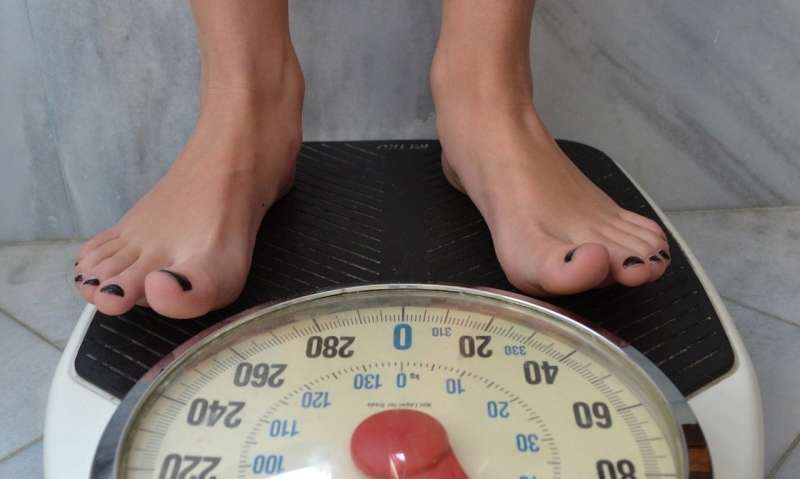Credit: CC0 Public Domain
Obesity (a body mass index [BMI] greater than 30) is associated with cardiovascular disease, diabetes, mobility deficits and other health issues, yet attaining and maintaining a healthy weight is difficult, especially for those who live in urban poverty. To help identify opportunities to lessen their weight-management burden, research scientists from Regenstrief Institute and Indiana University have conducted a new study exploring location, timing and other spatial-temporal factors associated with eating, drinking, and physical activity by middle-aged women living with severe obesity in an environment of urban poverty. The study was published in Obesity Science & Practice
"Weight loss is complicated, often steeped in generations of behavior and health disparity, so when we are asking someone who has been obese for decades to manage their weight, it's challenging," said study co-principal investigator NiCole Keith, Ph.D., Regenstrief Institute research scientist and IUPUI School of Health and Human Sciences associate dean of faculty affairs and professor. "With this study we have gained a better understanding of the behavior of middle-aged women, in their homes and other microenvironments, living with obesity and poverty and of what we might do in the future to work with them on weight management."
All study participants were enrolled in Healthy Me, a free Eskenazi Health lifestyle weight loss program. Neither the study participants randomized to receive healthy message cues related to eating, drinking and exercise 8 to 12 times a day via a specially designed mobile phone app nor those participants who did not receive these messages lost weight during the six months of the study. However, the data collected and analyzed by the researchers can inform more timely or precise weight loss strategies for individuals who are likely to suffer adverse social determinants of health, such as food, employment and housing insecurities and associated acute and chronic stressors.
Among the queries sent via the app during the study:
- "Eating now or in the past 15 min?"
- "Drinking now or in the past 15 minutes anything other than water?"
- "With anyone?"
Which questions were sent via the app was a function of the participant's location and solicited a simple one-tap response. To reduce the burden of questioning, the individual's location was determined by GPS, when possible. If the participant was at work, home, a store or the mall, then all questions were sent. If the participant was at a restaurant or the gym, then only the "with anyone" question was sent. If the participant was at the home of a friend or family member, the eating and drinking questions were sent. If a participant was at a doctor's office or clinic, the questions about eating, drinking, or "with anyone" were sent. Lastly, if a participant was at work, only the eating and drinking questions were sent.
Participants who indicated that they were with one or more individuals, with whom the app determined they frequently shared meals, were sent cues promoting healthy food choices. Participants indicating a lengthy sedentary period were prompted to engage in physical activity.
Home was the most common location at times of messaging. Participants reported "yes" to eating or drinking to a third of data requests regarding activity. Regarding social situations, being alone was significantly associated with less frequent eating and drinking unless the individual was alone at work, in which case being alone was significantly associated with a greater frequency of eating or drinking. At work, eating was most common late at night, whereas at home eating was most frequent in the afternoon and evening hours.
Significantly, the researchers found that while eating and drinking frequency, timing or location were not associated with six‐month weight change, there was an association between anxiety and weight loss and gain. During the six-month course of the study, Black women with anxiety lost weight. White women with anxiety gained weight.
"Education and counseling strategies for weight management have not been very successful for individuals who live in poorer situations," said study co-principal investigator Daniel O. Clark, Ph.D., a Regenstrief Institute research scientist and IU School of Medicine associate professor of medicine. "With this study we are learning from the very individuals we wish to target about the situations and environments that are shaping and persisting unhealthy behaviors. This knowledge will help in the development of tools to reach and assist them and others, perhaps even before they become obese."
Participants who entered the study prior to the COVID-19 pandemic and randomized to the intervention received a home visit from a research assistant who trained them on use of the app, took baseline measurements including weight, height and waist circumference, surveyed their weight loss attitudes and screened them for depression, anxiety and suicide ideation. Those joining the study after mid-March 2020 and randomized to the intervention received training on use of the app via Zoom and met with a research assistant outdoors or at an indoor location where they were comfortable.
More information: Daniel O. Clark et al, Environments and situations as correlates of eating and drinking among women living with obesity and urban poverty, Obesity Science & Practice (2021). DOI: 10.1002/osp4.557
Provided by Regenstrief Institute






















